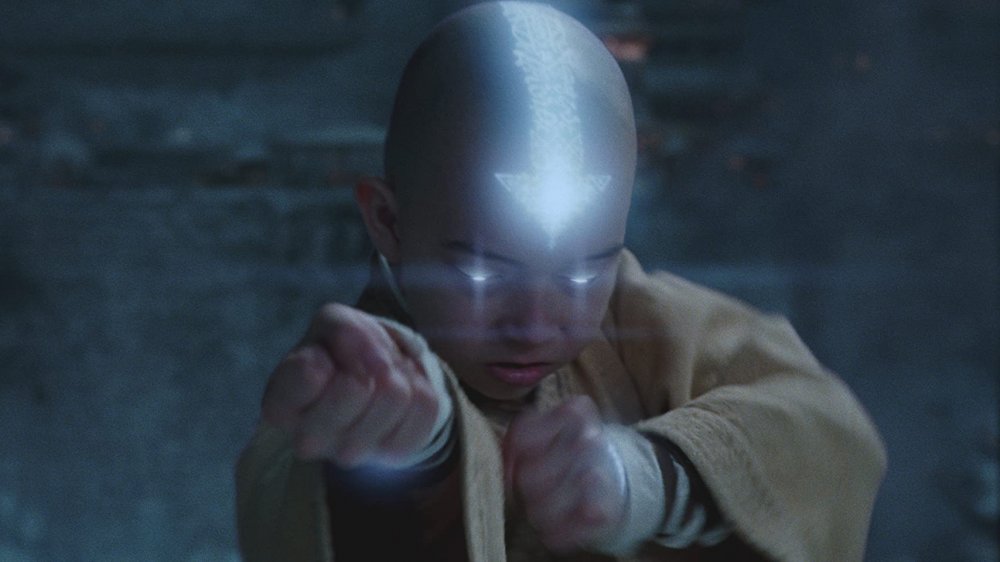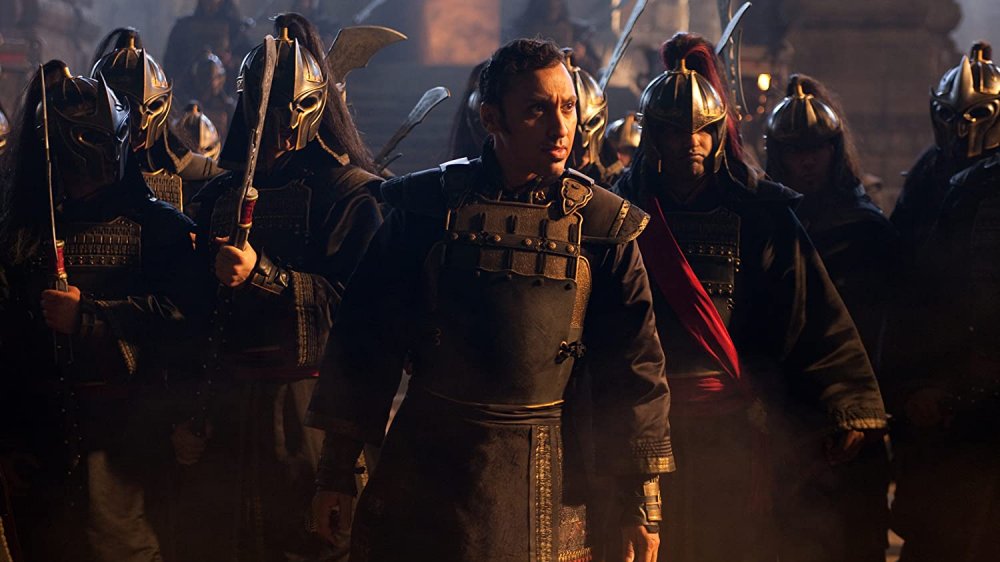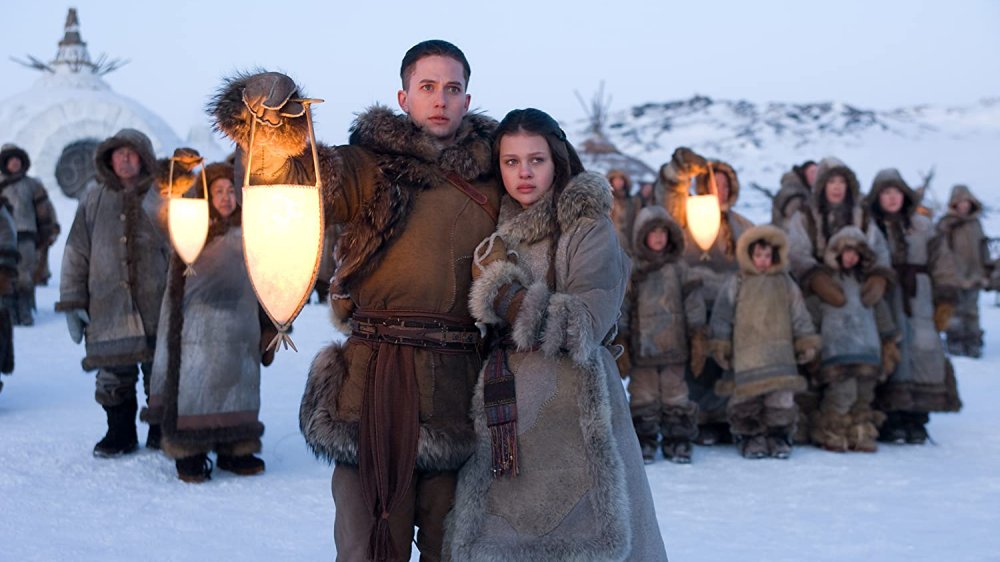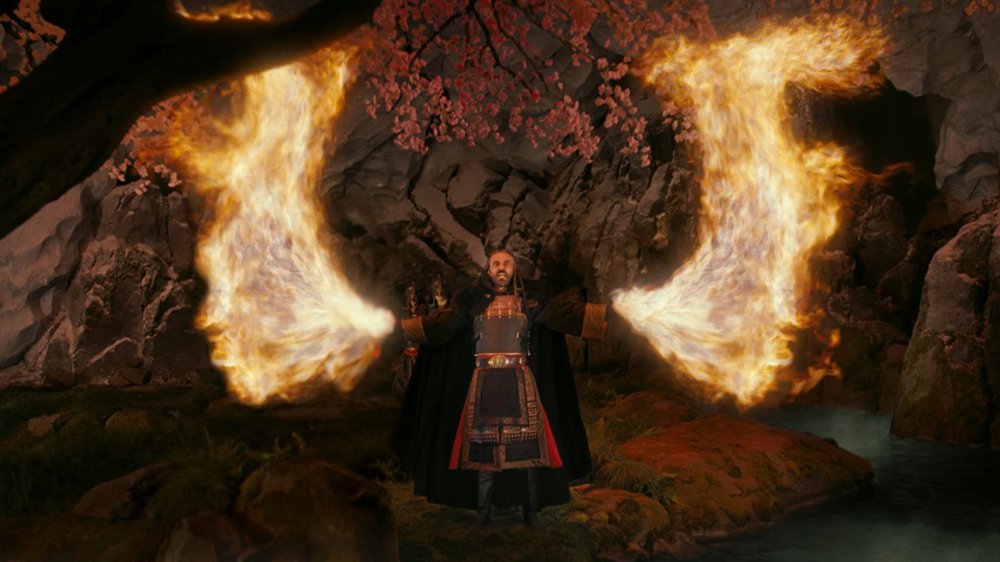The Real Reason The Last Airbender Never Got A Sequel
The arrival of Nickelodeon's acclaimed animated series Avatar: The Last Airbender on Netflix has been met with celebration. The 2005 series follows 12 year-old Aang, the last living survivor of his nation of Air Nomads and the Avatar — a reincarnated being with the power to control the elements of air, water, fire, and earth.
Freed from a block of ice after a century, Aang is joined by his Water Tribe friends Sokka and Katara, along with a few more friends and enemies. The group works to stop the Fire Nation's war from obliterating the other tribes, and to restore harmony to their world. The show was praised for its stunning visuals, incredible fight sequences, strong writing, and compelling character development. It was also championed for its handling of heavier themes like genocide, sacrifice, and maturity, as well as its careful and non-culturally-appropriative world-building.
It's a content library acquisition that is no doubt tied to the streamer's plans for a live-action adaptation of the Emmy-winning show, which has been in the works since 2018. A statement from original animated series co-creators Bryan Konietzko and Michael DiMartino promised said adaptation would dive even deeper into the "Characters, story, action, and world-building" of its predecessor.
Many fans are happy about the live-action series, but this is not the first screen continuation of Avatar. In addition to an animated sequel series Legend of Korra, Avatar: The Last Airbender was made into a live-action movie back in 2010. Directed by M. Night Shyamalan, the film starred Noah Ringer as Aang, Dev Patel as Prince Zuko, Nicola Peltz as Katara, and Jackson Rathbone as Sokka.
The Last Airbender was supposed to be the first in a trilogy of films based on the animated series. So, what happened to its sequel?
Like many films that fail to score a sequel, The Last Airbender faced issues at the box office.
The most obvious reason a sequel to the big-screen adaptation of such a beloved animated show never materialized has to do with the box office. Avatar: The Last Airbender had one of the most sought-after summer opening dates, with the Shyamalan movie scoring the coveted July 4th weekend slot.
During that holiday premiere, the film managed to garner just $40,325,019 in revenue (via Box Office Mojo). It ultimately came in second its opening weekend, right behind The Twilight Saga: Eclipse. The Last Airbender, produced on a $150 million budget, earned $131 million domestically and grossed $319 million worldwide. That might not seem bad, but taking into account the additional $130 million Paramount spent on marketing the film, it couldn't be seen as anything but a disappointment. What's more, with Paramount being the sole financier behind the film, the Los Angeles Times noted around its 2010 release that there was a higher financial risk for the studio if Avatar: The Last Airbender didn't perform well.
Suffice it to say that, having taken as big a financial hit as it did, Paramount lacked the motivation to move forward with any sequel plans.
The Last Airbender wasn't well received by critics or viewers.
While ticket sales weren't great, the fate of The Last Airbender sequel may have been sealed long before the first film ever released.
Despite only being on the air for a few years, the animated Nickelodeon series built a rather dedicated following, and those fans were as passionate about its mature social themes and character diversity as they were about its sprawling, mystical universe. A move away from said diversity by the live-action adaptation may have helped nail a sequel's coffin shut. As casting news for The Last Airbender slowly trickled out and the first trailer was eventually released, the film faced backlash for casting white actors in roles that were based on Inuit, Chinese, Japanese, and Tibetan cultures, as well as several other indigenous communities. It even led to Racebending.com launching a boycott, which was backed by Media Action Network for Asian Americans.
What critics and some audiences saw once the film was in theaters, however, made that initial negative response pale by comparison. The Last Airbender has a mere 5% score on review aggregator Rotten Tomatoes, with the audience score topping out at 30%. Critics pummeled it for its pacing, mediocre visual effects, poor dialogue, and clunky editing.
In his review for Newsday, critic Rafer Guzman wrote, "It's rare to see a film so choppily edited, poorly scripted and spastically directed that you can barely understand what you're watching." Fans weren't much kinder, with one Rotten Tomatoes super review writing, "So much is wrong with this movie, not the least of which is the atrocious acting. Easily M. Night Shyamalan's worst one so far, which is saying a lot."
While there were several reasons the sequel hasn't happened, "having little to no audience" might be the most important one.
M. Night Shyamalan doesn't like the commitment of filming CGI movies that aren't his original ideas.
Shyamalan has spent most of his career — and most of his best creative years — working within the twisty mystery-thriller genre. The Happening and Lady in the Water might not be as great as The Sixth Sense or Unbreakable, but the Glass director knows what he's good at and what stories he wants to tell.
In a 2015 interview with Metro UK, Shyamalan revealed that he prefers to tell his own stories rather than adapting source material that isn't his own as he did with The Last Airbender. He told the outlet that the movie project didn't just take him out of his element of original content, but also required a lot of time to execute due to all of its effects.
"It takes so long to make those CGI movies," Shyamalan said. "'It's hard because it takes two/three years, and I don't get to make two of my own movies, so there's always a struggle of choosing someone else's material over my own."
The CGI was an essential part of the film, but it was arguably not the most complicated visual element involved. The budget for the first of three planned movies included an additional $5 to $10 million to convert it into 3D only a handful of months before its July 2010 release. The 3D conversion resulted in scenes being deleted to facilitate an on-time release, leaving large and noticeable holes in the narrative. Not only was the story scrambled, but it was also hardly Shymalan's Star Wars, as the studio and director seemed to believe it could be.
"For the last 10 years, I've been working in a cottage industry of the supernatural. And I've always had my eye on doing a franchise," Shyamalan told the LA Times ahead of The Last Airbender's premiere. Unfortunately, h'ed have to wait for Split, and the surprise twist that tied it to Unbreakable, to head up a franchise of his own.



